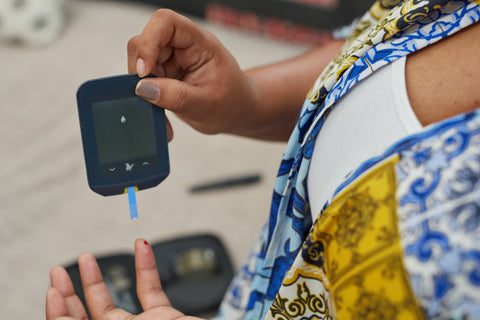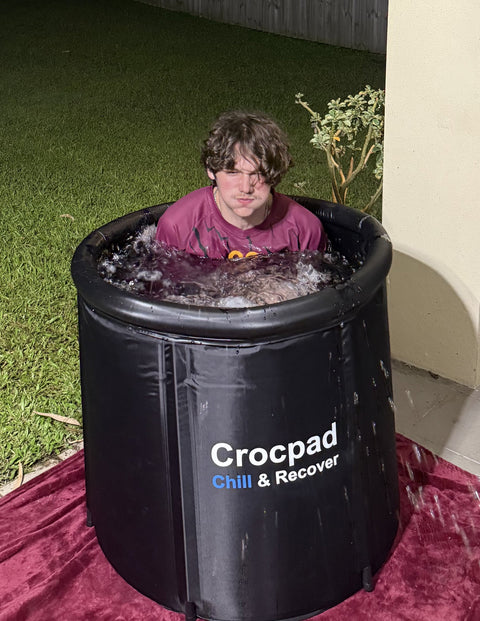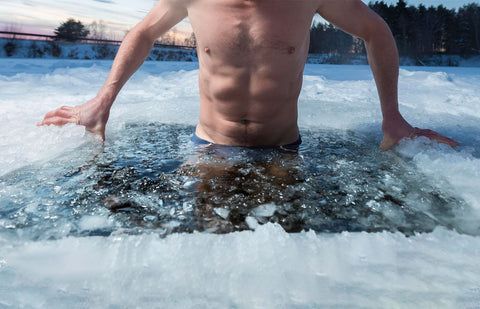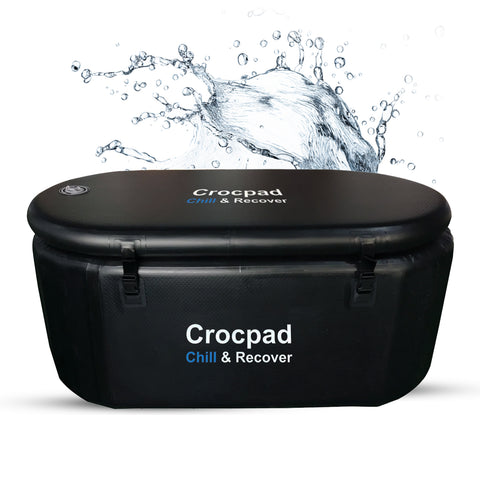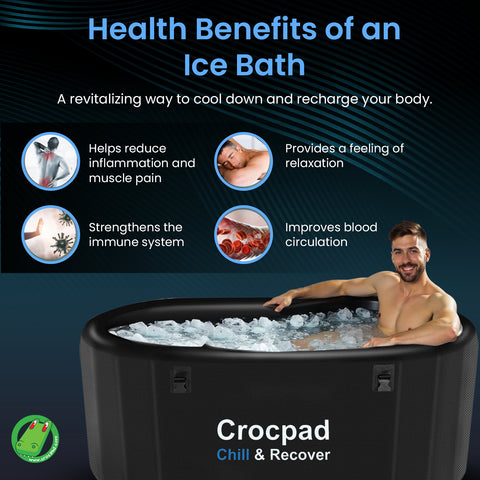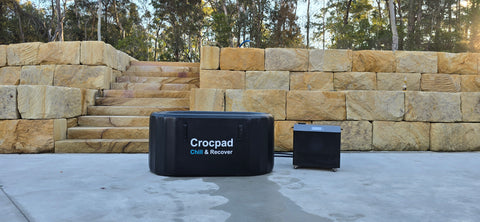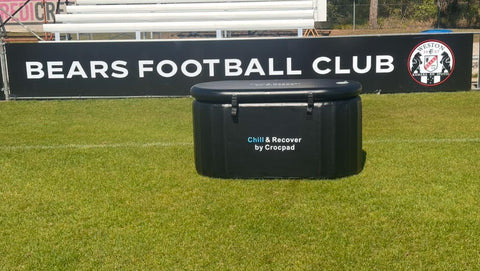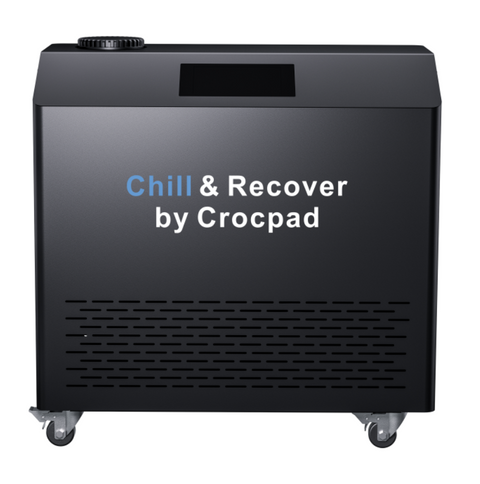Why Ice Baths Are a Recovery Powerhouse
Cold water immersion—also known as an ice bath or cold plunge—is a proven method for supporting physical recovery:
-
Reduces inflammation and muscle soreness through vasoconstriction, reducing swelling and accelerating repair.
-
Enhances circulation: during rewarming, increased blood flow flushes metabolic waste like lactic acid from damaged muscles.
-
Boosts your metabolism by activating brown fat, which burns calories to generate heat.
-
Sharpens mental focus and elevates mood, via endorphin release and vagus nerve stimulation.
Ideal for athletes and fitness lovers, ice baths help you recover faster, train harder, and feel more energized.

How Ice Baths Can Support People with Diabetes
For individuals managing diabetes, ice baths may offer unique recovery and metabolic benefits—but safety comes first:
-
Improved insulin sensitivity: Cold exposure can boost GLUT4 activity, facilitating better glucose uptake and balancing blood sugar levels. Some studies suggest up to 43 % improvement in insulin sensitivity in type 2 diabetics.
-
Inflammation reduction: Cold immersion shrinks blood vessels, lowering inflammation that exacerbates diabetes-related issues.
-
Metabolic support: Activating brown fat helps increase daily energy burn—beneficial for weight and blood sugar control.
These benefits can support recovery and wellness, but only when approached with proper safety precautions.
Safety Guidelines: Ice Bath Tips for Diabetics
Always consult your healthcare provider before starting cold therapy. This is especially vital if you have conditions like neuropathy, cardiovascular disease, or impaired circulation.
Before Your Ice Bath:
-
Monitor blood sugar levels: avoid sessions if below 70 mg/dL or above 250 mg/dL.
-
Avoid full-body immersion if you have numbness, open wounds, or cold-related sensitivity.
During Your Ice Bath:
-
Water temperature should be 10–15 °C (50–59 °F) for recovery benefits. Cooler levels are only for advanced users.
-
Start with 2–5 minutes, gradually increasing—never exceed 10 minutes per session.
-
Pay attention to body signals: stop if shivering deeply, feeling dizzy, or numb.
After Your Ice Bath:
-
Dry off fully, dress warmly, and sip something warm to stabilize your temperature.
-
Engage in light activity like walking or stretching to boost circulation.
-
Avoid hot showers, caffeine, alcohol, or further intense activity immediately afterward.
🎯 Incorporating Ice Baths into a Recovery Routine
-
Frequency: Start with 1–2 sessions per week. Adjust based on your workout intensity and recovery needs.
-
Timing:
-
For post-exercise recovery, ice baths within 90 minutes help reduce muscle stiffness and speed healing.
-
For those pursuing strength building goals, consider delaying the bath 4–6 hours after lifting to avoid interfering with muscle adaptation.
-
🧠 Tips to Maximize Ice Bath Benefits
-
Practice controlled breathing (e.g., slow inhalations and extended exhalations) to calm your nervous system.
-
Frame the experience with meditative intent—visualize recovery, embrace the challenge, and focus on your breath.
-
Keep a session journal: record water temperature, duration, blood sugar before and after, and how you felt to track progress and safety.
Balance Caring with Performance
Ice baths offer compelling benefits for recovery—whether you’re an athlete, wellness-seeker, or managing diabetes. They can reduce inflammation, speed up recovery, and support metabolic health when approached with caution.
But these benefits hinge on safe execution: medical clearance, mindful water temperatures, short exposure, and attentive body awareness.
If you're curious about at-home recovery strategies, ice bath gear, or combining cold therapy with workouts, check Crocpad Ice Baths for recovery.

